Michael Baker Boathouse by Associated Architects
An elongated timber prow oversails a solid brick base at this school boathouse in Worcester, England, by British studio Associated Architects (+ slideshow).
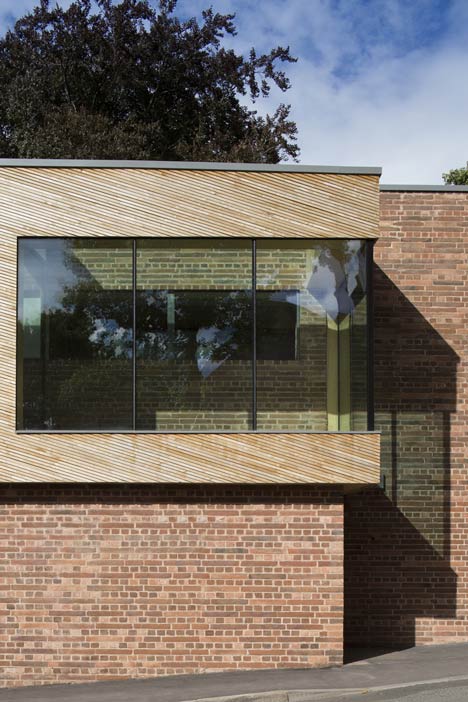
The Michael Baker Boathouse replaces an existing building that had served as the The King's School's boathouse since the 1950s but was too small to accommodate storage for rowing boats and sculls as well as training facilities, changing rooms and events spaces.
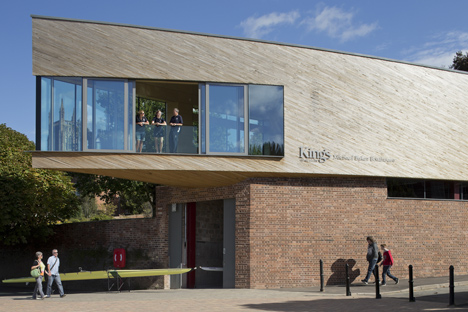
Associated Architects redesigned the building as a two-storey structure with a boat-shaped first floor that cantilevers out towards the adjacent River Severn, while the brickwork ground floor protects the interior from the regular flooding that occurs on the site.
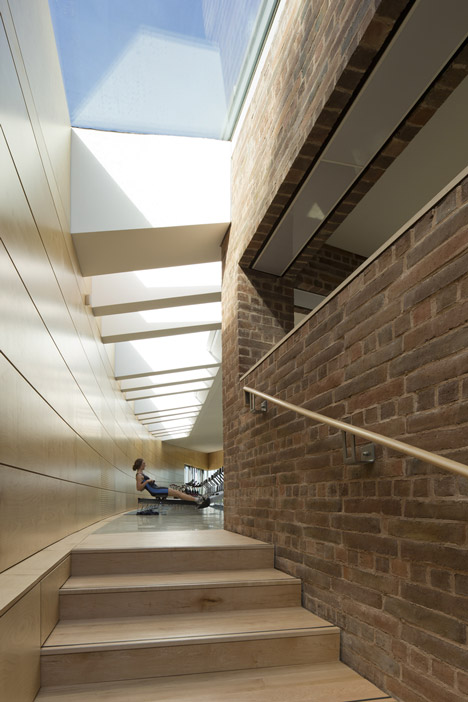
The architects used double-length bricks to emphasise the slender form of the boathouse. The timber-clad upper floor features diagonal lengths of sweet chestnut, which will naturally fade to a silvery-grey, and a glazed bow facing out over the water.
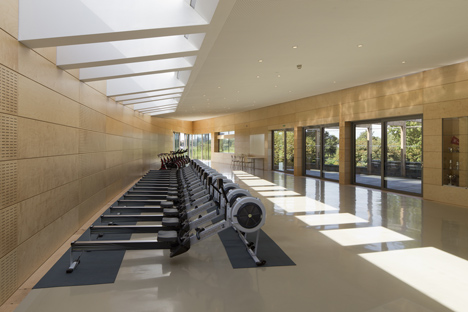
"This and the gently curving plan, following [Worcester's] historic defensive line, give the building a distinctive modern presence on Riverside Walk," say the architects.
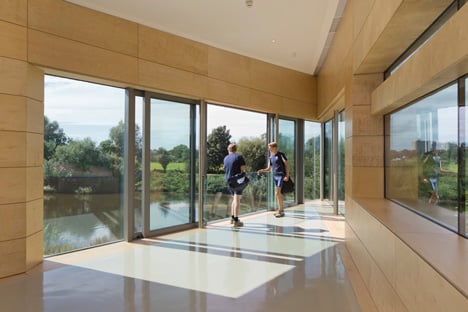
Interior walls are lined with sheets of birch, alongside more exposed brickwork. A skylight spans the roof to bring daylight into the upper floor.
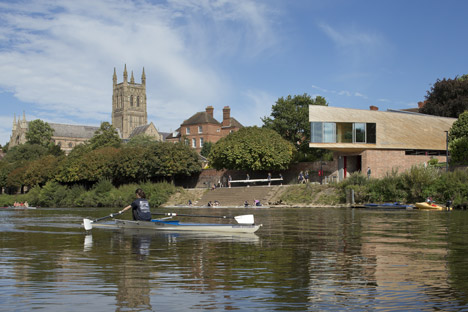
The layout of the new boathouse also creates a new pedestrian route across the neighbouring memorial gardens.
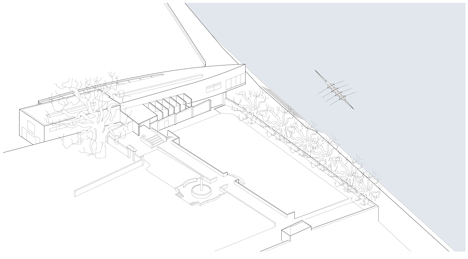
"The scheme creates a new route to the boathouse through the gardens, which is much more direct, wheelchair friendly, and improves security: the previous boathouse was isolated and accessible only from outside the school grounds," add the architects.
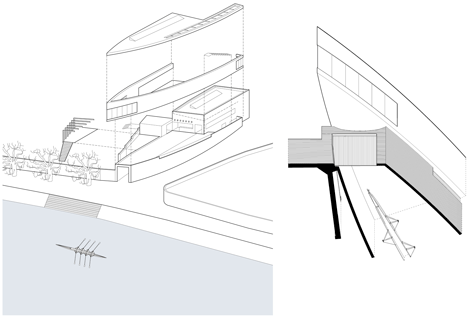
The Michael Baker Boathouse is the latest of several projects by Associated Architects at The King's School, which include a new library and a sports hall that is still under construction.
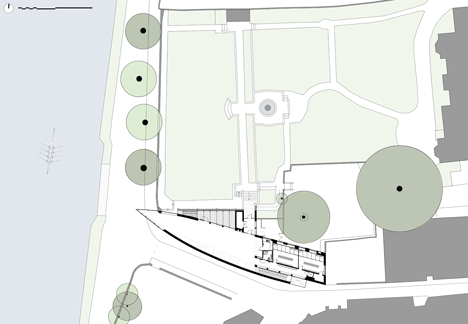
Other boathouses on Dezeen include a cylindrical building in Austin and a renovated Victorian boathouse in the south of England.
Photography is by Martine Hamilton Knight.
Here's some more information from Associated Architects:
The King's School, Worcester
Michael Baker Boathouse
Associated Architects' second ten-year Masterplan for King's Worcester included rebuilding the Boathouse, which was previously a small and unsightly 1950s building. The site is a focal point in the Masterplan, Conservation Area and in the Worcester City Council/Sustrans Worcester Riverside project. On the line of the old city defences, it is at the edge of the historic city core which has a rich history including Norman and medieval archaeology. The Masterplan proposal to create a striking modern building was welcomed by Worcester City Council planners.
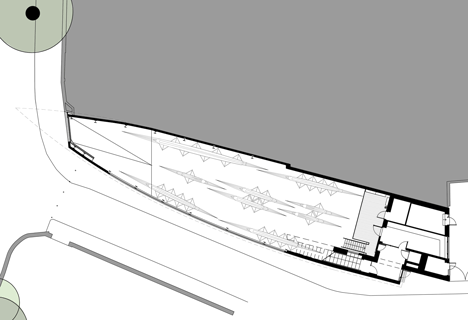
The existing ground floor footprint is increased by 60% to provide storage for all the School's considerable fleet of rowing boats and sculls. The site is subject to regular flooding, so this floor's construction internally and externally is robust fair-faced brickwork growing out from the line of the historic brick embankment. Reflecting the elongated form of the building, the new wall is built with double-length bricks.
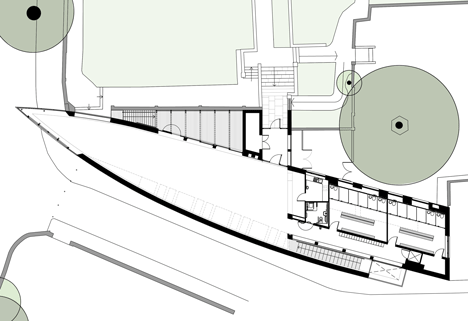
By contrast, the lightweight upper floor floats above the retaining wall and flood plain. It provides changing, teaching and a school/community training and reception space, with dramatic views up and down the River Severn from a new glazed and cantilevered prow. This and the gently curving plan, following the historic defensive line, give the building a distinctive modern presence on Riverside Walk.
The upper floor overlooks the historic Creighton Memorial Gardens, previously an under-used part of the School grounds. The scheme creates a new route to the Boathouse through the Gardens, which is much more direct, wheelchair friendly, and improves security: the previous Boathouse was isolated and accessible only from outside the School grounds. A new garden terrace and windows north focus views to the twin Worcester landmarks of the Cathedral and St Andrew's spire.
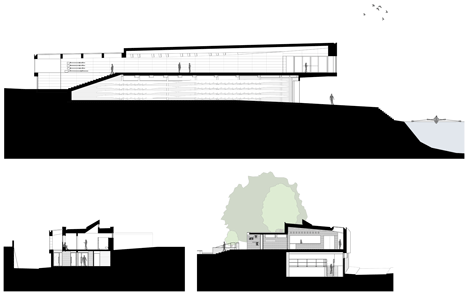
Fine sweet chestnut timber laths cloak the upper volume, weathering down to a natural silvery-grey colour in keeping with the sensitive historic context. Rather than running horizontally, the laths are set at a shallow angle to enhance the dynamic form of the building. The interior is panelled in ice-birch over timber I-beams, facilitating airtight construction and rapid thermal response for multiple uses. The roof is traditional standing seam terne-coated stainless.
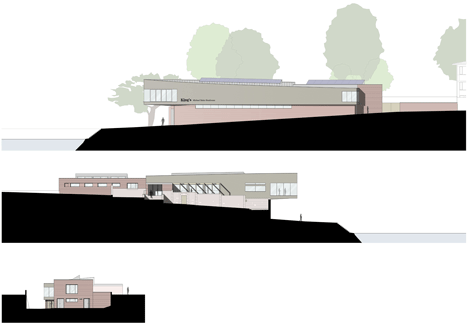
Sustainability is a central consideration in the brief and design. Solar electric and hot water roof panels meet much of the building's energy needs in summer, and make a useful contribution in winter. The construction uses the principles of Passivhaus design with triple glazing, super-insulation and air-tightness. These measures, coupled with a wood-pellet boiler, give environmental performance to EPC A, approaching zero carbon standards.
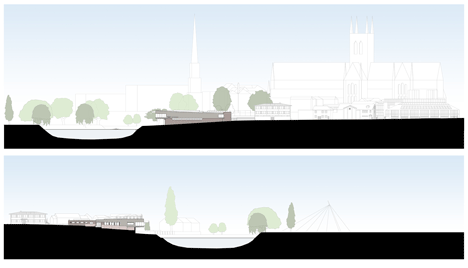
Contract Value: £1.86M
Cost per sqm: £1772/sqm
Floor area: 772 sqm
Design: 2010
Construction: 2012
Carbon footprint: 9.4 kg CO2 kg/m2/yr